(Adapted from an article originally on my website)
I draw pictures of old abandoned vehicles because I love how they look and the thoughts they bring to mind. They have - and I've tried to show this - the well-earned and hard-won beauty and character of things which have interacted with people and terrain and weather for many, many years.
Every vehicle is different because of the "life" it's had. The way they've been driven and the environment they've been a part of and responded to are always unique to each one of them; and so looking at one vehicle is not the same as looking at any other, even of the same make or model.
Besides being of interest themselves - the rust, the dents, the broken glass, the faded beauty (I think about when these same cars were brand new; they had a different kind of beauty then that had nothing to do with individuality), these old vehicles also bring to mind the humans we imagine having been associated with them. The vehicles are in a way extensions of (as well as possessions of) the humans who have used them, and so the worn-out old cars and trucks (and tractors, and etc.) not only have stories about their own lives to tell (or for us to imagine), but also make us think about the people who might have owned them.
Motorized vehicles exist only because of people - People invented them in the first place; people design them and make them and drive them, and people and people's possessions are carried in them. In other words, vehicles are not meant to exist alone - They need humans in order to be built in the first place, and then in order to fulfill their function they continue to need humans; in fact, it is only when they can no longer perform their expected "duties" in the service of humans that they are abandoned and left to rust to pieces or be picked apart or smashed with countless others to be turned into a part of something entirely different, never again to be what they were.
Sometimes while looking at the picture I'm drawing from, I not only imagine the people closely associated with the vehicle over time, but can hardly help from seeing in my mind's eye a "picture" of the world (or at least the area) those people lived in during those times. I think of the twenties, or the thirties, or the forties (those are the years in which the cars and trucks I like best were built).
Even if the stories I read into what I see are not quite the same as (or perhaps are very different than) the actual facts, it really doesn't matter. I still get something out of the experience of contemplating the subject, imagining its past and even its future, as well as its present circumstances. The drawing becomes a scene that I temporarily inhabit, allowing the contents of my imagination, my thoughts, ideas, experiences and knowledge of various kinds, as well as my emotions, to roam and explore within it as they will.
In addition to my desire to get across the "character" (and something of the implied "life story") of the vehicle, it is also very important to me to make each picture aesthetically-pleasing and interesting as possible, for my own satisfaction as well as for that of others who may see them. This is far more important than getting the car, or especially the setting, to look "just like it does in the photograph." What I make are pictures, not meant at all to look like photographs, and in fact I would feel as though I'd failed utterly if my pictures came out to look like photographs. A "work of art" does something different than a photograph does - It presents the subject via the particular medium used plus the artistic imagination of the artist who has, ideally, created the work skillfully and thoughtfully in such a way that the viewer experiences the subject as much as possible in the way the artist intends for him or her to experience it, while at the same time incorporating an overall look and quality that gives pleasure.
All of this is what I think about when drawing my "old car and truck" pictures, and these are the things that I hope to get across to the people who will look at them. I am not saying that I have accomplished my objectives in all cases, and in fact I myself am only really pleased so far by only a small number of my own drawings (and even those I would improve if I could), but I've done the best I can for now and even those that aren't my best are not too terrible - I like to look at them.
SOME EXAMPLES OF MY OLD-VEHICLE DRAWINGS
More of my old-vehicle drawings can be seen on my website in The Garage section, where I have links to all of my old-vehicle drawings.
1936 Pontiac
Conte Crayons
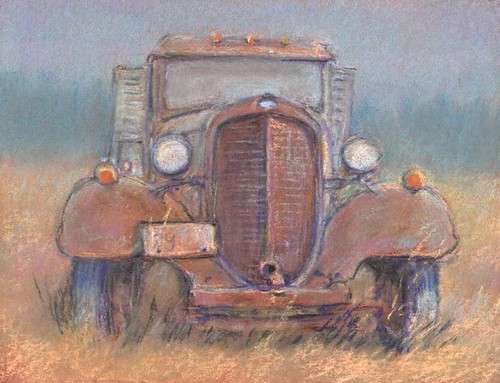
1935 Chevrolet truck
Conte Crayons
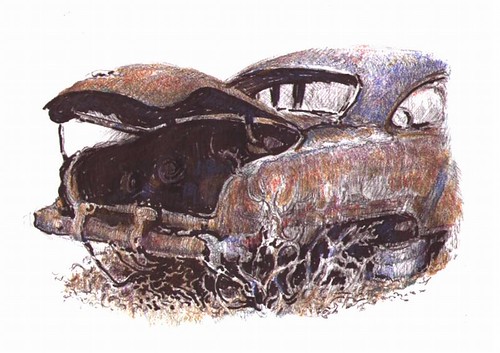
1951 Oldsmobile
Bic ballpoint pen, Sharpie marker, Conte pastel pencils
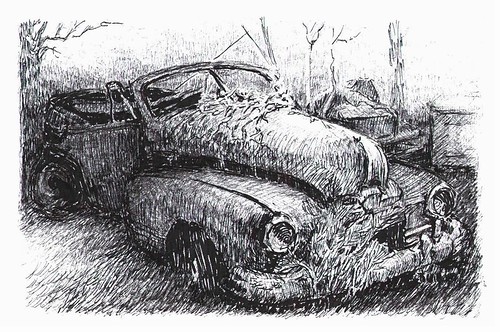
1947(?) Pontiac
Bic ballpoint pen, gel pen, Sharpie marker
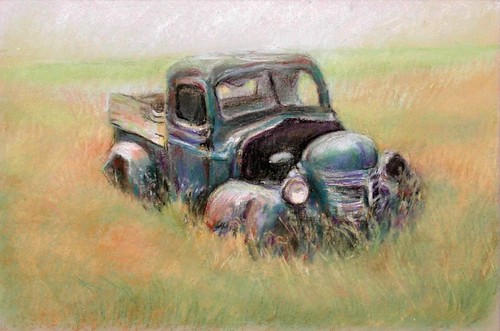
1946 Fargo Truck
Conte Crayons
If you'd like to receive the free Thinking About Art Monthly Newsletter, see near bottom of this page.
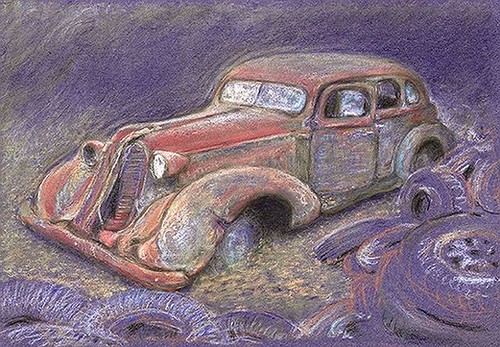
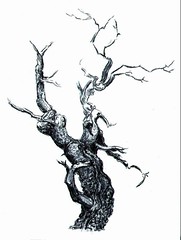
0 comments:
Post a Comment